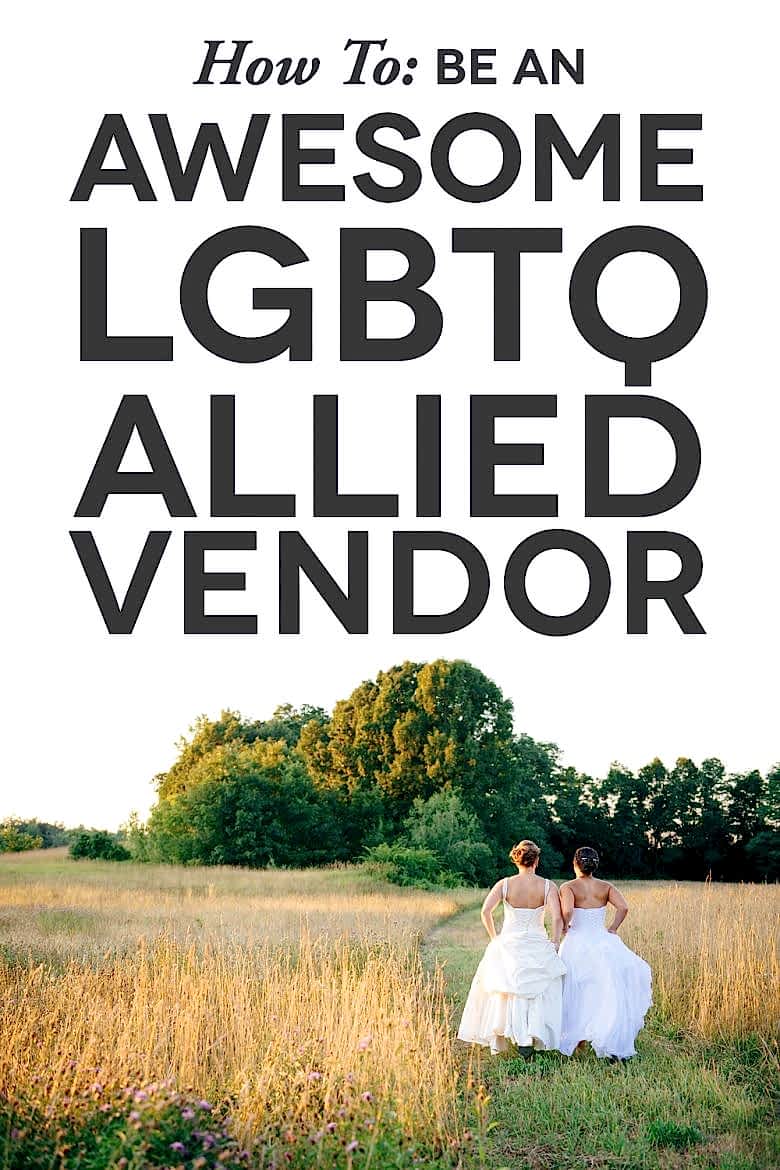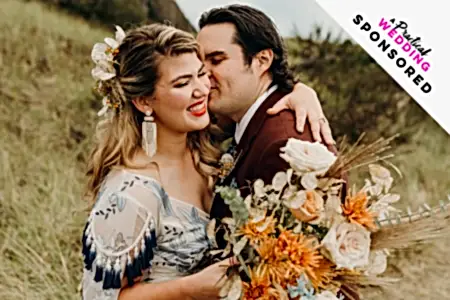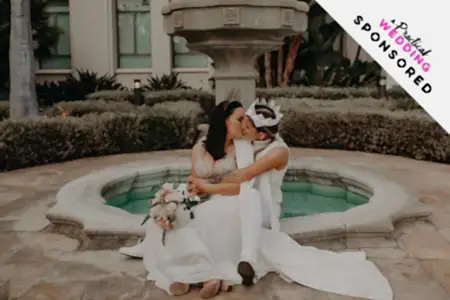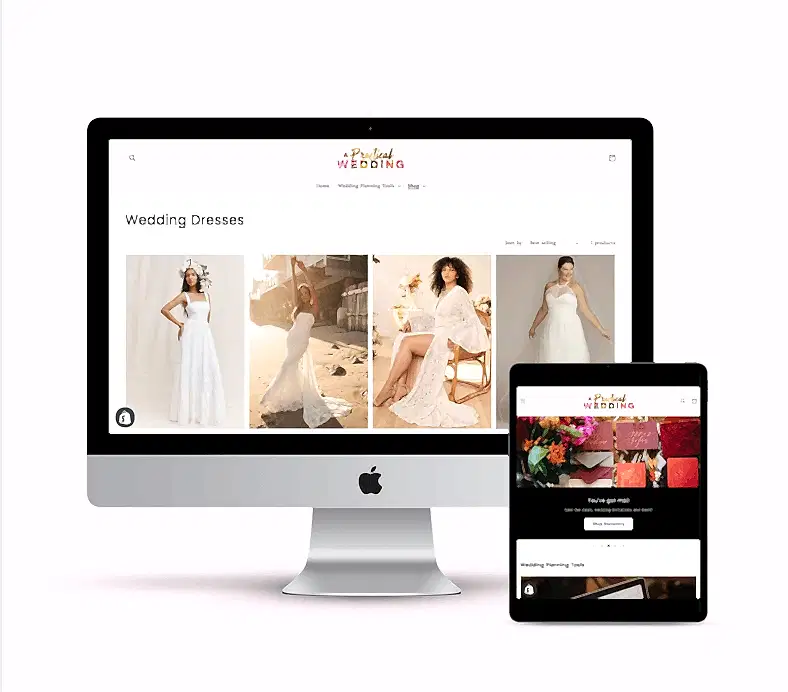
Now that same-sex marriage is legal across the US (yay!), we’re seeing a ton of self-identified “LGBTQ-friendly” vendors rushing to service the needs of the community. This proactive strategy is a great first step towards creating a more LGBTQ-friendly wedding environment. However, as more companies attach themselves to the moniker “LGBT-friendly,” the term has largely been stripped of its meaning. Without action, it mostly means that you’re open to serving yet another market segment. But to truly earn the LGBT-friendly label, it’s time to stop thinking about LGBTQ people as a market, and start thinking of them as people.
As a queer married photographer, I focus on serving my own community because they’re my family. Through doing this work (and my former job running a resource for gay wedding planning), I’ve thought a lot about how to put your money where your mouth is. It goes beyond “lesbian-owned and operated.” And it goes beyond “LGBT-friendly.” (APW, of course, is awesome in requiring that all its vendors commit to marriage equality.) But LGBTQ couples need more that that. So I’ve put together a few dos and don’ts for creating a company that’s truly committed to LGBTQ people – beyond marriage equality – and wants to make sure their business is truly LGBTQ-friendly.
DO:
- Get actively involved in the community. Talk to people, and lots of them. As the late great queer theorist, Eve Kosofsky Sedgwick once wrote, “People are different from each other.” That includes LGBTQ people. Your “gay friend” represents themself, not the community at large. You can’t overstate my love of drag, but going to Pride to get drunk and ogle drag queens does not make you an ally in the deepest sense of the word.
- Stay informed. Obviously, we’re in the wedding industry, but queer folks care about a lot more than marriage equality, so you need to get beyond, “Isn’t it great you guys can get married?!” There’s lots of other LGBT-related news that’s better conversation fodder (and it’s pretty easy to find online).
- Ask your clients what pronouns they prefer when you are in doubt. It’s far better to respectfully ask (“What pronouns do you prefer?”) than to repeatedly misgender someone. Respect and adhere to what they say.
- Offer your services to real couples if you’re trying to build your portfolio. If you do inspiration shoots it’s super-duper awkward when the models are performing a sexual orientation or gender expression that isn’t their own. Trust me, we can tell. It’s not about gaydar; it’s about attention to chemistry. We can always tell. It’s pandering and tokenizing.
DON’T:
- Don’t make assumptions about gender roles and expressions in relationships. There may be two brides, two grooms, or a bride and a groom, or they might hate all those labels. Listen to how your clients describe their relationship and how they interact. For the love of God, do not assume one person is the “girl” who needs to be in center and in focus of each shot, with the other person vaguely out of focus in the background. (Don’t do that with straight people either—please.)
- Before you go on a tagging binge, don’t assume someone identifies as gay. I have a form that I send clients with a checklist where they can check off identities, styles, etc. by which they would be comfortable with tagging their wedding (“gay” “queer” “rustic” “Indian” “religious” “plus size”). Yes, I know you want SEO as we all do, but don’t prioritize that over your couple.
- Don’t gender your website or materials. Your website must prioritize your clients over other vendors and even over the powers that be at Google. You might not think it’s a big deal to write “Bride” and “Groom” on your contracts, but it is, and we notice. Natalie and I did a lot of crossing out when signing our contracts. It’s exclusionary, and oh-so-very-easy to fix.
- Most of all, don’t out people. This is particularly important if one person is trans*. Unless they tell you, you don’t know if they identify as trans* or fully with another gender, and you don’t know how they identify in their workplace, with their family, etc. Ask.
What it all comes down to fundamentally is to pay attention and listen. Learn. Ask. And be open to difference.






